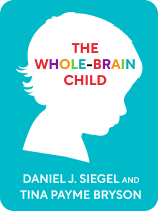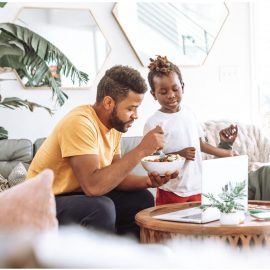

This article is an excerpt from the Shortform book guide to "The Whole-Brain Child" by Daniel J. Siegel and Tina Payne Bryson. Shortform has the world's best summaries and analyses of books you should be reading.
Like this article? Sign up for a free trial here .
Does your child struggle with keeping her emotions in check? Do you want to know how to calm a child when she is angry, upset, or otherwise emotionally overwhelmed?
When a child is in the grip of an emotional takeover—whether she is upset, angry, or hyper-excited—it may feel you don’t know how to calm a child. But, the simplest way to calm her down is through physical movement to relax her or get her energy out.
Here is how to calm a child using physical movement.
How to Calm a Child Using Movement
When your child’s in the midst of an emotional takeover, physical movement can help her to calm down. Not only does your physical state reflect your emotions—for example, causing your muscles to tense when you’re anxious—but research shows that physical actions can also influence your emotional state, which means that you can counteract intense emotions with deliberate physical movements.
When you recognize that your child is upset and needs to get moving, always empathize and connect with her emotionally first. Then, there are two ways to introduce movement:
- Get her to physically relax by instructing her to breathe deeply or relax her muscles.
- Get her moving in a more active way, in order to get the anxious energy out.
Tips for Using This Strategy at Different Ages
Ages 0-3: Once you’ve connected emotionally, find a playful way to get her to move—for example, suggest you race to the other side of the house, tickle her, or play follow the leader.
Ages 3-6: You’ll probably have no trouble getting a child this age to move around. You may even find it helpful to discuss her emotions while moving—for example, play catch while you talk about what made her feel angry. That’s how to calm a child at this age.
Ages 6-9: As your child gets older, there are more ways you can get her moving, such as going for a bike ride or doing yoga. Explain to your child how her upstairs and downstairs brains work, and why moving will help her to calm down and give her the power to have more control of her feelings.
Ages 9-12: Clearly explain this strategy to your child, so that she can not only practice it with you, but also get into the habit of using it on her own.
Tips for Parents to Avoid Flipping Their Lids
People of all ages flip their lids every now and then. When you feel like you’re about to flip your lid at your child, follow these steps:
- Keep your mouth physically closed to ensure you don’t say something you shouldn’t.
- Keep your hands behind your back to ensure you don’t touch anyone more forcefully than you should.
- Give yourself a short break to calm down. Tell your child that you need to get yourself calm—this way your child won’t feel personally rejected—and then step away for a moment.
- Use the physical movement strategy we discussed to re-engage your upstairs brain: Breathe deeply, stretch, jump up and down, or run around for a minute.

———End of Preview———
Like what you just read? Read the rest of the world's best book summary and analysis of Daniel J. Siegel and Tina Payne Bryson's "The Whole-Brain Child" at Shortform .
Here's what you'll find in our full The Whole-Brain Child summary :
- How to increase your child's self-awareness and emotional control
- Why the logical and emotional sides of the brain have to work together
- How to figure out why your child is afraid of something






